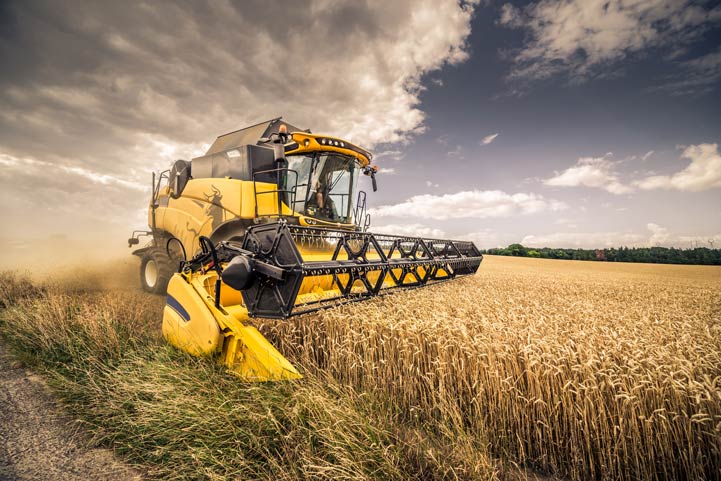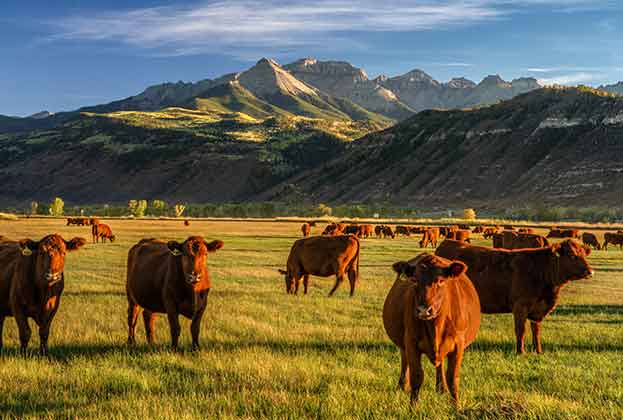In a year dominated by the Covid-19 pandemic, global farmland performance has demonstrated resilience
Savills Global Farmland Index tracks average capital value performance for crop/arable land types across the world. During the past 18 years (2002–2020) the Index has recorded a 10% compound annual rate.
Covid-19 had a momentous impact on economies across the globe and the farmland market was not immune to economic pressures. During 2020, the Index recorded average global farmland value growth, albeit small at 0.2%, but a swing from the decrease in values recorded in 2019 (see Global Farmland Index, below). A significant influence on 2020’s Index was the large shift in currency values as countries struggled with their health crises. In domestic currency only five countries analysed showed a fall in average annual performance: New Zealand; Ireland; Uruguay, Argentina and Denmark. Average farmland values in Brazil increased by nearly 14% in local currency, but the Index reports a decline of almost 13% due to the Brazil real (BRL) falling substantially against the US dollar (USD).
New Zealand witnessed a reduction in average farmland values, while Australia recorded an increase. Although the market in New Zealand was not particularly affected by currency shifts, the country’s response to the pandemic, with borders closed to almost the entire world, meant international purchasers could not easily participate in the market, even within their existing restrictions on foreign investment. Values in Western Europe and North America have remained steady in 2020, posting small increases, such as the 1.5% increase in the UK (0.9% in domestic currency).
THE INFLUENCE OF COMMODITY PRICES
Investment in farmland is also impacted by productivity and markets. The market in Argentina was impacted by dry weather in 2020, so with the country facing food price inflation and a contracting economy, the government introduced restrictions on the sale of maize in the global market (although it was partially reversed at the last minute) and increased export taxes on soya beans. Farmland values in Argentina have now fallen for a seventh year, falling 30% since 2014.
Compared to other primary assets, gold was a stand-out performer during 2020, as investors sought an asset to hedge against uncertainty (see Global Farmland Index and key commodity returns, below). In comparison, the global cereals and food indexes along with the Global Farmland Index reported more steady growth. However, the importance of farmland in terms of food and energy security and increasingly environmental sustainability means the demand for farmland continues.
THE RISK AND REWARDS OF PURCHASING FARMLAND
Population growth is seen as the main driver for growth in the demand for agricultural productivity. The World Bank forecasts indicate that food commodity prices will generally rise in real terms over the next decade, including wheat (1%), barley (12%), chicken (3%), while the price of beef will fall 13%. However, the ability for land to provide solutions to a range of pressing issues facing society, from reversing the biodiversity crisis to offering carbon sequestration through soil management, could support future land values through differing income streams and new classes of investor targeting the sector. As with every investment, however, there is a risk to capital. Risk vs Return, below, illustrates there is a correlation between countries that outperform others with capital growth, but have the largest swing in values over the same period.
COVID-19: GLOBAL ECONOMIC IMPACTS
While the economic damage from the global Covid-19 pandemic is ongoing, early estimates predicted that major economies could lose at least 2.9% of their GDP in 2020 (Statista). This forecast was restated to 4.5% of GDP, equivalent to 3.94 trillion US dollars.
Global stock markets have also suffered dramatic falls due to the Covid-19 outbreak, although they were able to recover from the losses quite quickly. The Dow Jones reported its largest-ever single day loss of almost 3,000 points on March 16, 2020 – beating its previous record of 2,300 points that was set only four days earlier.

LAND MARKETS – REGULATION UPDATE
- In March 2020, the Ukrainian government voted to end the moratorium that has prevented landowners from selling land for nearly 20 years. Ukrainian citizens can buy up to 100 hectares, although the law preventing international purchasers remains in place for now. The legislation gave the government over a year to prepare for the changes, which came into force on 1 July 2021. With Ukraine home to a quarter of the world’s 'black soil', offering huge potential for food production, the impact on this legislation on investment in the sector will be watched closely.
- In August 2020, Romania introduced restrictions on the sale and purchase of agricultural land. The conditions appear to give preference to buyers having a domicile or residence in Romania for a period of at least five years and buyers with past experience in farming in Romania. The legislation also restricts the sale of land within eight years of purchase by charging an 80% tax on any uplift in value during the period of ownership.
Read the articles within Global Farmland Index below.
.jpg)

